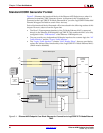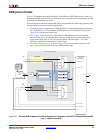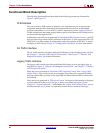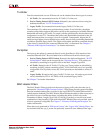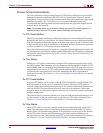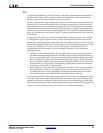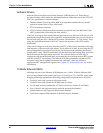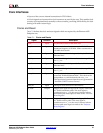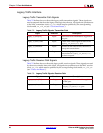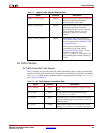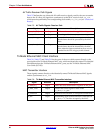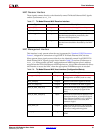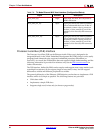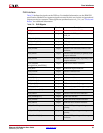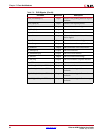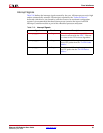
48 www.xilinx.com Ethernet AVB Endpoint User Guide
UG492 July 23, 2010
Chapter 5: Core Architecture
Legacy Traffic Interface
Legacy Traffic Transmitter Path Signals
Table 5-2 defines the core client-side legacy traffic transmitter signals. These signals are
used to transmit data from the legacy client logic into the core. All signals are synchronous
to the MAC transmitter clock, tx_clk, which must be qualified by the corresponding
clock enable, tx_clk_en (see “Clocks and Resets”).
Legacy Traffic Receiver Path Signals
Table 5-3 defines the core client side legacy traffic receiver signals. These signals are used
by the core to transfer data to the client. All signals are synchronous to the MAC receiver
clock, rx_clk, which must be qualified by the corresponding clock enable, rx_clk_en
(see “Clocks and Resets”).
Table 5-2: Legacy Traffic Signals: Transmitter Path
Signal Direction Description
legacy_tx_data[7:0] Input Frame data to be transmitted is supplied on
this port
legacy_tx_data_valid Input A data valid control signal for data on the
legacy_tx_data[7:0] port
legacy_tx_underrun Input Asserted by the client to force the MAC to
corrupt the current frame
legacy_tx_ack Output Handshaking signal asserted when the
current data on legacy_tx_data[7:0]
has been accepted.
Table 5-3: Legacy Traffic Signals: Receiver Path
Signal Direction Description
legacy_rx_data[7:0] Output Legacy frame data received is supplied
on this port.
legacy_rx_data_valid Output Control signal for the
legacy_rx_data[7:0] port



